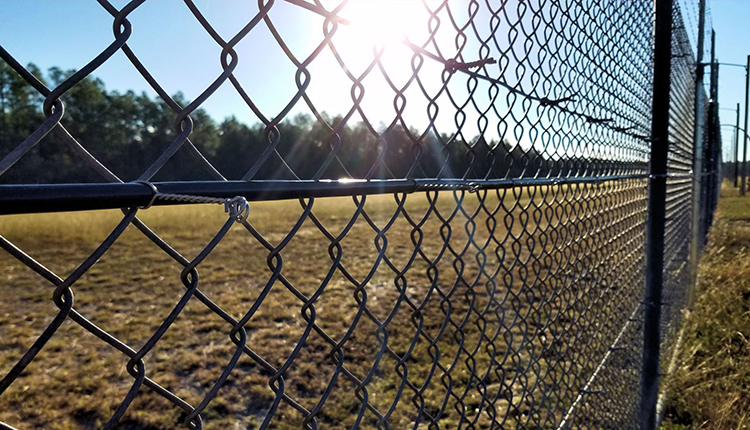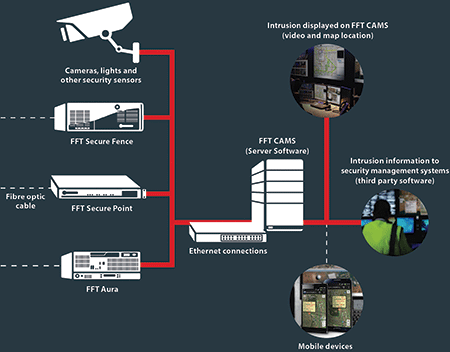Improve Your Security With Advanced Fiber Optic Security Solutions
In an era where security is critical, sophisticated fiber optic protection systems offer a compelling remedy for enhancing safety and security across various environments. What implications do these innovations hold for future protection actions?
Benefits of Fiber Optic Protection
Harnessing the advantages of fiber optic innovation significantly enhances safety systems throughout different applications. Among the main advantages is the increased data transfer ability, permitting the transmission of large amounts of information at broadband. This is particularly vital for real-time video surveillance, where high-resolution feeds can be sent without latency, making certain instant reaction abilities.
In addition, fiber optics exhibit premium resistance to electro-magnetic disturbance, which is crucial in atmospheres with prospective signal disturbances. This reliability ensures consistent efficiency in critical security procedures. Moreover, fiber optic wires are much less prone to touching and unauthorized accessibility contrasted to typical copper electrical wiring, thereby boosting information stability and discretion.
Another significant benefit is the longevity of fiber optic systems; they are a lot more resistant to environmental aspects such as dampness, temperature changes, and harsh compounds. This strength converts to reduce maintenance expenses and longer lifespans for safety installations.
Finally, the light-weight nature of fiber optic cables facilitates much easier installation and directing, especially in complex facilities (fiber optic security system). Inevitably, the combination of fiber optic innovation right into protection systems not just strengthens security procedures yet likewise optimizes operational efficiency
Trick Attributes to Take Into Consideration
When reviewing fiber optic security systems, a number of key features should be taken into consideration to make certain optimum efficiency and performance. Initially, evaluate the system's detection range and sensitivity; an extensive array enables keeping track of large areas, while high level of sensitivity ensures that also minor disruptions are detected immediately.
Following, take into consideration the assimilation abilities of the system. A fiber optic security system need to seamlessly user interface with existing safety actions such as video cameras and alarms, producing a cohesive safety network.
Durability and ecological resistance are also vital attributes. Guarantee that the system is made to stand up to rough weather problems and potential physical hazards, as this will extend its functional lifespan.

Lastly, check out the scalability of the system. A durable fiber optic safety and security system should be easily expanding to suit future requirements without considerable overhauls. By meticulously thinking about these features, you can pick a fiber optic safety and security option that enhances security and security in your setting.
Setup Process Introduction
To efficiently apply a fiber optic safety and security system, an organized installation procedure is necessary. This process begins with a thorough website analysis to identify the article source certain security needs and to determine optimum areas for fiber optic cords and safety and security tools. Following this analysis, the setup team will certainly create a detailed strategy, consisting of cord pathways, required tools, and compliance with local guidelines.
Next, the setup entails laying the fiber optic wires, guaranteeing they are shielded from ecological factors and physical damage. Appropriate handling techniques are vital, as fiber optic cords are delicate and can be quickly damaged. After the cabling is set up, ports and discontinuations are thoroughly finished to make sure signal honesty.
The succeeding phase includes setting up security tools such as video cameras, motion detectors, and alarm system systems, all integrated with the fiber optic network. Rigorous testing is conducted to validate that all components are working appropriately and to guarantee optimal efficiency.

Comparing Fiber Optic to Traditional Equipments
The advancement of safety technology has actually caused considerable developments in the contrast between fiber optic systems and traditional copper-based systems. Fiber optic systems make use of light to transfer data, providing superior transmission capacity and rate contrasted to their copper equivalents. This leads to improved information transmission abilities, making optical fiber perfect for high-resolution video surveillance and real-time tracking.
Additionally, fiber optic wires are immune to electromagnetic interference, reducing the probability of signal degradation created by external aspects. This characteristic ensures regular efficiency, even in tough atmospheres. On the other hand, traditional copper systems are extra vulnerable to disturbance, resulting in potential susceptabilities in safety and security applications.
Durability is an additional benefit of fiber optic systems. They are less susceptible to harm from ecological aspects such as moisture and temperature variations, which can jeopardize copper wiring. Fiber optics are lighter and thinner, permitting for easier installation and minimized physical footprint.
Nonetheless, traditional systems tend to have reduced preliminary costs, making them appealing for budget-conscious tasks. While fiber optic systems might require a greater upfront investment, their long-lasting benefits-- such as lower maintenance costs and higher dependability-- usually exceed the first expense, placing them as a superior choice for modern protection requirements.
Future Patterns in Safety Modern Technology
Arising trends in safety and security innovation are poised to change the landscape of monitoring and danger detection - fiber optic security system. As organizations increasingly deal with advanced dangers, developments such as artificial knowledge (AI) and artificial intelligence (ML) are coming to be indispensable check these guys out to protection systems. These innovations improve the ability of fiber optic systems by enabling real-time information evaluation, determining anomalies, and automating responses to possible violations
Furthermore, the integration of the Internet of Points (IoT) is reinventing safety and security frameworks. more IoT tools can supply extensive situational awareness and promote smooth communication in between different security parts. This interconnectedness enables much more reliable tracking and faster incident feedback times.
Biometric verification is also acquiring momentum, supplying a greater level of safety with unique physical qualities. As this technology develops, it is most likely to be included right into fiber optic systems for boosted gain access to control.
Final Thought
In verdict, advanced fiber optic safety systems represent a significant improvement in security and surveillance innovation. The transition from traditional systems to fiber optic solutions shows a growing trend in the direction of more reliable and efficient safety actions in an increasingly complex technical landscape.
Comments on “The Role of Fiber Security in Enhancing Your Cyber and Physical Security Network”